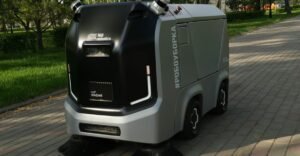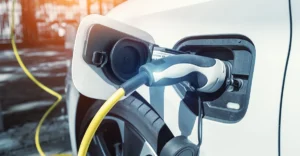Mobility technology is transforming the way we move and interact with our environment. From electric scooters zipping down city streets to self-driving cars navigating complex traffic, innovation in this field is happening at a breathtaking pace. As urban populations swell and environmental concerns grow, the need for efficient, sustainable transportation solutions has never been more pressing.
Imagine a world where commuting isn’t just bearable but enjoyable—where congestion becomes a thing of the past and public transport syncs seamlessly with personal travel needs. This vision isn’t far off; it’s already taking shape through groundbreaking advancements that promise to redefine mobility as we know it.
Join us on an exploration of how these innovations are shaping our cities, influencing our daily lives, and setting the stage for future possibilities in transportation. The journey begins now!
The Evolution of Mobility Technology
Mobility technology has come a long way since the invention of the wheel. Early methods relied on human and animal power, gradually evolving to steam engines and motorized vehicles. Each advancement brought newfound freedom and efficiency. The 20th century marked a significant turning point. The introduction of mass-produced automobiles transformed societies, reshaping cities and lifestyles. Roads expanded, suburbs blossomed, and personal mobility became commonplace.
As we moved into the 21st century, connectivity began to redefine how we think about transportation. The rise of digital platforms enabled ride-sharing services like Uber and Lyft, to provide convenience at our fingertips. Today, we’re witnessing an exciting shift toward electrification and automation. Electric vehicles are gaining traction in response to climate concerns while autonomous technologies promise safer travel experiences.
Current Challenges in Mobility
Mobility technology faces several pressing challenges today. Urban congestion is a major hurdle, as cities struggle to accommodate growing populations and their transportation needs. Infrastructure often lags behind innovation. Many roadways and transit systems require upgrades to support new technologies like electric vehicles or smart traffic management systems.
Safety concerns also loom large. The introduction of autonomous vehicles raises questions about reliability and potential accidents, creating hesitation among consumers. Environmental impact remains another significant issue. While electric cars reduce emissions, the production of batteries can be resource-intensive and harmful to ecosystems.
Groundbreaking Innovations in the Industry
The mobility sector is witnessing remarkable innovations that are reshaping how we move. From advanced battery technologies to smart traffic management systems, the landscape is evolving rapidly. One standout development is vehicle-to-everything (V2X) communication. This technology allows vehicles to interact with other cars, infrastructure, and even pedestrians. It enhances safety and efficiency on our roads.
Another exciting innovation comes from the realm of air mobility. Drones and flying taxis promise to alleviate urban congestion by taking transportation skyward, providing new routes for travel. Sustainability remains a focus too. Hydrogen fuel cells are gaining traction as a cleaner alternative to traditional fuels, pushing boundaries in eco-friendly transport solutions.
Electric and Autonomous Vehicles
Electric vehicles (EVs) are transforming the way we think about transportation. They run on electricity, producing zero emissions and contributing to cleaner air. As battery technology advances, EV ranges continue to improve, making them more accessible for everyday use. Autonomous vehicles take innovation a step further. Equipped with sensors and AI, these cars can navigate without human intervention. This technology promises increased safety by reducing human error—one of the leading causes of accidents.
Many cities are witnessing trials of self-driving taxis, offering a glimpse into a future where personal ownership may be less common. Ride-sharing apps could integrate autonomous fleets, reshaping how we commute. The combination of electric and autonomous technologies presents exciting opportunities for urban planning and environmental sustainability. These advancements are not just trends; they represent a shift in our relationship with mobility itself.
Smart Cities and Public Transportation
Smart cities leverage technology to enhance urban living. One key aspect is public transportation, which plays a vital role in connectivity. With real-time data tracking, commuters can access information about bus and train schedules instantly. This reduces waiting times and improves overall efficiency. Mobile apps are transforming how we navigate our journeys. They offer route planning, fare payments, and live updates, making travel seamless.
Moreover, integrating different modes of transport—like bikeshares with buses—encourages eco-friendly choices. These systems promote sustainability while reducing congestion on the roads. Cities are also adopting electric vehicles for public transport fleets. This shift not only cuts emissions but also aligns with broader climate goals.
Impact on Society and Future Possibilities
The advancements in mobility technology are reshaping our daily lives. With the rise of electric and autonomous vehicles, commuting is becoming more efficient and eco-friendly. Imagine a world where traffic congestion is reduced by smart algorithms directing vehicle flow. Communities are embracing these innovations to enhance public transport systems. Smart cities are integrating real-time data, improving accessibility for everyone. This shift can lead to healthier urban environments as air quality improves with fewer emissions.
Moreover, future possibilities hold exciting potential for personalized transportation experiences. Think about AI-driven solutions that cater to individual needs, making travel seamless and tailored. As these technologies develop further, they will challenge existing infrastructures and social norms. The way we think about personal space, ownership of vehicles, and even city layouts may evolve significantly as society adapts to new ways of moving around.
Conclusion
The transformation of mobility technology is nothing short of remarkable. As we look around, it’s evident that the landscape has changed dramatically over recent years. Electric and autonomous vehicles are not just futuristic concepts; they’re becoming increasingly mainstream. This shift signifies a move towards sustainability and efficiency in our transportation systems. Smart cities are also on the rise, integrating innovative public transport solutions to enhance urban living. These advancements go beyond convenience—they promote environmental responsibility and improve quality of life for countless individuals.
Challenges remain, from infrastructure needs to regulatory hurdles. Yet, the potential benefits far outweigh these obstacles. The trajectory suggests a future where mobility is seamless, eco-friendly, and inclusive. As society embraces these groundbreaking innovations, it’s essential to stay informed and engaged with developments in this dynamic field. The journey toward smarter mobility continues—let’s see where it takes us next.




